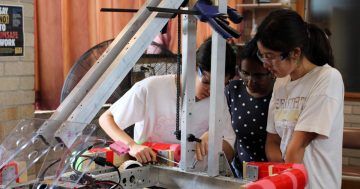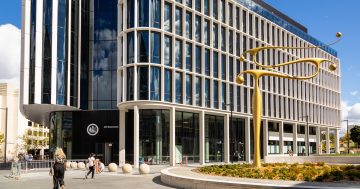Alex Christian* says some employees are breaking their workdays into segments of a few hours at a time, doing tasks flexibly and asynchronously in the new world of work.
 For decades, the workday has generally meant employees arrived at their office desks at 9am, grabbed a midday lunch, then clocked out at 5pm, full stop.
For decades, the workday has generally meant employees arrived at their office desks at 9am, grabbed a midday lunch, then clocked out at 5pm, full stop.
The pandemic, of course, changed this.
Not only have workers been doing their jobs from remote locations for more than two years, they’ve also changed when their work gets done.
This shake-up has given rise to all sorts of new working patterns, including the ‘non-linear workday’.
Employees in this arrangement can do their jobs outside the traditional nine-to-five block, often whenever it works best for them.
While working asynchronously — keeping different hours to colleagues — workers can complete tasks in flexible, focused bursts scattered throughout their day.
The idea is employees can craft work schedules around their personal lives, rather than cram life into fixed, contracted hours.
The mass adoption of hybrid- and remote-working patterns, as well as increasingly flexible schedules, means non-linear workdays are more attainable for larger swaths of the workforce.
In some cases, workers are already practising them to an extent without even realising, such as choosing to do focused work late at night or getting ahead on projects in the early morning.
Not every employer will give workers this degree of freedom, but in the new world of work, non-linear workdays are still set to take a more prominent role.
Experts say there are myriad benefits of working asynchronously, as long as certain measures are in place.
While non-linear workdays appear to be the latest product of the pandemic shake-up, they’re not a new concept.
In fact, they’re a throwback to how humans traditionally worked in pre-industrial times.
Then a typical workday would last from dawn until dusk, interspersed with regular breaks, meals and naps.
Senior Partner at consultants, McKinsey & Company, Aaron De Smet said that changed when society industrialised, and a rigid, five-day, 40-hour workweek eventually arose.
The eight-hour workday model translated to the office. Even with the arrival of technology, nine-to-five office structures remained in place.
De Smet says the pandemic shook loose this traditional thinking, as workers remained productive while taking breaks, spending time with family and working flexible hours.
Non-linear workdays can manifest in many ways.
Maybe a worker with flatmates wants to get focused tasks done before everyone else wakes, so she takes on a block of tasks from 6am to 8am, then shortens her workday at the tail end.
Or perhaps a parent takes a couple of hours in the afternoon to pick up his child from school and share a meal, and tacks on the rest of his work time after his daughter goes to sleep.
The variations are endless — and highly personal.
Assistant Professor of Behavioural Science at the London School of Economics and Political Science, Laura Giurge says the popularity of non-linear workdays stems from workers becoming accustomed to flexible working routines through COVID-19.
“Asynchronous work allows people to save commuting time, get admin tasks done during low productivity hours, fit in more exercise and save money having home-cooked meals,” she says.
Greater flexibility generally means greater productivity, too.
As opposed to logging on for eight hours straight at a fixed time, employees can break up their workdays into blocks that best suit their natural working rhythms.
“A core benefit of non-linear workdays is having control over how to spend your time and getting work done when you’re most productive,” Giurge says.
Non-linear workdays help shift work from being activity focused to being outcomes focused, she says.
“It becomes not about when or where you work, but about getting the work done. Managers become responsible for setting the goals and the vision for employees, but they don’t tell them how to get there.”
De Smet says the non-linear model aligns with the nature of knowledge work — it enables employees to do their jobs when they’re most creative and productive.
“It’s no longer really about effort and time spent, it’s about creating the best outcomes,” he says.
However, for a non-linear model to succeed, he believes some framework generally has to be in place.
These are guideposts that ensure employees don’t stray too far from a workable schedule.
This could take the form of core collaborative hours in which live, synchronous work can take place, such as meetings or brainstorms.
De Smet thinks it’s these necessary mechanisms that add a layer of complexity to non-linear workdays, meaning some employers have been slow to embrace them.
“There is still much knowledge work that needs to be done collaboratively. You can’t let everyone dictate their own schedules unto themselves, or you end up with a free-for-all in which no synchronous work is ever done,” he says.
The hope is that if employers can introduce non-linear workday policies more formally, it will redress the balance between asynchronous work and overwork.
De Smet says this can help prevent burnout.
“It’s finding that perfect mix in the new world of work where the constraints of when, where and how we do our jobs have been loosened — partly through technology, partly through new norms arising from the pandemic,” he says.
He believes the benefits of non-linear workdays are reciprocal.
“For employees, huge workloads no longer mean staying in the office past 7pm and missing their kid’s soccer match. Now, they can have more of a personal life and still get their work done,” De Smet says.
“For employers, the work being done is often creative, innovative and emotional – best achieved in flexible, optimised settings.”
*Alex Christian is a United Kingdom-based freelance writer specialising in stories relating to culture, technology and business.
This article first appeared on the British Broadcasting Corporation’s website.











